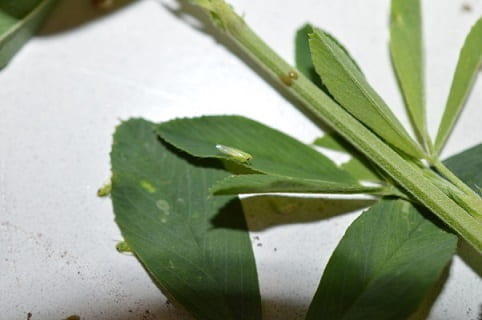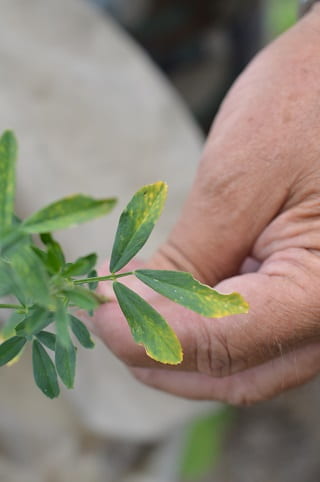–by Dr. Raymond Cloyd
We have received numerous inquiries regarding large grubs (larvae) crawling on their backs across pavements or other hard surfaces. Well, these are the larval stage of the green June beetle, Cotinis nitida. Larvae are 3/8 (early instars) to 1-1/2 (later instars) inches long, and exhibit a strange behavioral trait—they crawl on their back (Figures 1 and 2)—likely due to having a constant itch J. This behavior of crawling on their back is unique among turfgrass-infesting larvae.

Fig 1. Green June Beetle Larva (Grub) Crawling On Pavement Surface (Auth–Raymond Cloyd, KSU)
Photo for Fig. 2 not available
The larvae are abundant now due to the excessive moisture (rain) we have received. Young larvae are generally located at the interface between the soil and thatch layer feeding primarily on organic matter including thatch and grass-clippings; preferring material with a high moisture content. The larvae can be found in swimming pools, garages, and basements. Green June beetle larvae can tunnel 18 inches into the soil; and even deeper in sandy soils.







